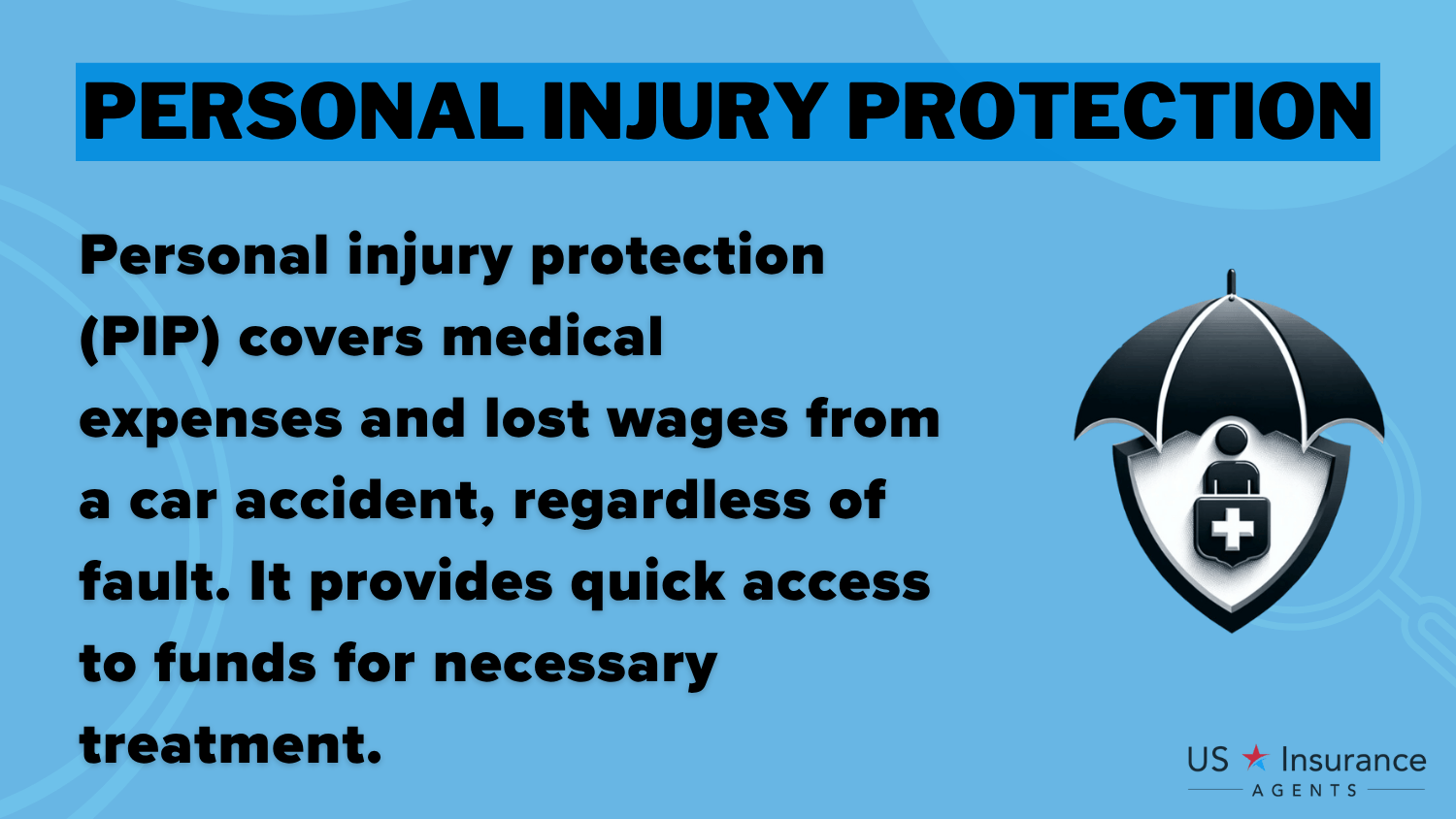How to Write a Demand Letter to an Insurance Company in 2026 (Settle in 4 Steps)
Understand how to write a demand letter to an insurance company to improve your chances of a fair settlement by up to 75%. Start by presenting your details, describing the incident, attaching evidence, and stating your demand. Insurance typically costs about $32 a month, so clear letters matter.
Read more Secured with SHA-256 Encryption





Table of Contents
Table of Contents


Head of Content
Meggan McCain, Head of Content, has been a professional writer and editor for over a decade. She leads the in-house content team at Quote.com. With three years dedicated to the insurance industry, Meggan combines her editorial expertise and passion for writing to help readers better understand complex insurance topics. As a content team manager, Meggan sets the tone for excellence by guiding c...
Meggan McCain


Sr. Director of Content
Sara Routhier, Senior Director of Content, has professional experience as an educator, SEO specialist, and content marketer. She has over 10 years of experience in the insurance industry. As a researcher, data nerd, writer, and editor, she strives to curate educational, enlightening articles that provide you with the must-know facts and best-kept secrets within the overwhelming world of insurance....
Sara Routhier


Licensed Insurance Agent
Eric Stauffer is an insurance agent and banker-turned-consumer advocate. His priority is educating individuals and families about the different types of insurance coverage. He is passionate about helping consumers find the best coverage for their budgets and personal needs. Eric is the CEO of C Street Media, a full-service marketing firm and the co-founder of ProperCents.com, a financial educat...
Eric Stauffer
Updated July 2025
How to write a demand letter to an insurance company can make a big difference in getting up to 75% more in settlements. Clearly present your details, explain the incident, attach evidence, and state your demand.
Being able to communicate well is especially important when dealing with the best insurance companies. Learning these steps will help you handle your claim with confidence and get the outcome you deserve.
- Step #1: Present Your Details – Provide your info and claim details
- Step #2: Describe the Incident – Summarize what happened and the damages
- Step #3: Attach Evidence – Include supporting documents
- Step #4: State Your Demand – Specify the amount and deadline
Looking to save on insurance? Simply enter your ZIP code into our free quote tool, and we’ll help you find the best rates without any hassle.
4 Easy Steps to Write a Demand Letter to an Insurance Company
If you are in the midst of an insurance claim, a well-written demand letter can be a key to get the result you want. Implement these 4 simple steps and present your case confidently, and improve your chances of receiving the compensation you are entitled to receive.
Step #1: Present Your Details
When you are writing a demand letter, the first thing you should focus on detailing is your own information so the insurance company is able to effectively process what you are asking for.
- Include Personal and Contact Information: Provide your full name, address, phone number, email, policy number, and claim number.
- Incident Date, Time, and Location: Provide the date, time, and location (address) of the incident associated with your claim.
- Reference Supporting Documents: Indicate any key documents you are including, such as police reports, medical records, or photos.
By giving those details early and often in your presentation, you will enable the adjuster to immediately understand what your claim consists of, enabling him or her to talk confidently about what it will take to deal with your claim. Keep your insurance agent’s role in the claims process as already established.
Step #2: Describe the Incident
When drafting your demand letter, it can be helpful to begin by explaining a bit about what happened. Who was targeted, where, when it happened, and who was affected? This makes the insurance company understand the situation in a more real way and how it affects your case.
Providing clear details early on will avoid misunderstandings and help to smooth out the process. It’s one of the key tips from a guide to handling large insurance claims that can make a big difference in getting your claim settled fairly.
Step #3: Attach Evidence
Show evidence that substantiates your claim, such as receipts for medical bills that have already been paid by personal injury protection (PIP) insurance, repair estimates, photos of damage or injuries, a police report, or proof of lost wages.
Sharing these documents helps the insurance company see what you’ve been through and shows that your request is based on real facts, which makes it more likely you’ll get a fair settlement.
Step #4: State Your Demand
When you’re making your demand, be super clear about how much money you’re asking for to cover your losses. Break it down so it’s easy to follow—include medical bills, repair costs like those covered under what is comprehensive coverage?, lost wages, and any other expenses.
Scott W. Johnson Licensed Insurance Agent
This way, the insurance company knows exactly what you need and why. Don’t just throw out a random number—make sure it makes sense and that you can back it up with your evidence. And be sure to give them a deadline to respond, usually about 30 days, so they know you’re serious and things keep moving.
Free Auto Insurance Comparison
Compare Quotes From Top Companies and Save
Secured with SHA-256 Encryption
Tips for Writing a Demand Letter
Writing a clear demand letter after an accident helps document your losses, clarify your request, and initiate negotiations. Reviewing current auto insurance rates also provides helpful context for evaluating settlement offers and coverage options.
Auto Insurance Monthly Rates by Coverage Level
| Insurance Company | Minimum Coverage | Full Coverage |
|---|---|---|
| $87 | $228 | |
 | $62 | $166 |
| $76 | $198 | |
| $43 | $114 | |
 | $96 | $248 |
 | $63 | $164 |
| $56 | $150 | |
| $47 | $123 | |
| $53 | $141 | |
| $32 | $84 |
The demand letter can literally make or break how your claim is treated. Knowing average auto insurance rates now, plus understanding how does the insurance company determine my premium, provides you with great context when offered a settlement.
Auto insurance settlements are highest for young drivers, with 16-year-old males averaging $18,500 and females $16,700. Rates decline with age, reaching around $10,800 for 60-year-old males and $10,200 for females. Males consistently receive slightly higher settlements across all ages.
Tim Bain Licensed Insurance Agent
Spend the time to write a letter that is clear and well-organized, and investigate your coverage options to make sure you’re getting the best deal.
Getting Ready to Send Your Demand Letter
A clear, well-crafted demand letter can greatly improve your insurance claim’s success by clearly presenting your case and supporting it with solid evidence. It should be straightforward, factual, and give the insurer a complete view of your losses.
As you prepare your letter, be mindful of commonly misunderstood insurance concepts that could affect your claim, things like policy limits, exclusions, or deductibles. Clear details prevent delays, and timing is key. Send your demand when fully prepared with all documents.
Don’t be discouraged by high insurance rates. Enter your ZIP code, and compare low-cost premiums from the leading insurers.
Frequently Asked Questions
What is a demand letter to an insurance company?
It’s a formal letter with a formal tone, and you ask for compensation for the damage that the insurance company has caused you. You disclose your losses and tell them how much you’d like to receive.
Is writing a demand letter necessary to settle an insurance claim?
No, it’s not always required, but it’s highly recommended. A clear letter helps communicate your case and improves your chances of a fair settlement. Get cheap insurance rates by entering your ZIP code in our insurance quote comparison tool now.
When should I send a demand letter to the insurance company?
You should send it once your medical condition is stable and you have all supporting documents to back up your claim; understanding options like the best car insurance for medical payments coverage can also help you know what expenses to include.
What information should be included in a demand letter?
Include your personal details, a clear description of the incident, relevant evidence, and the total amount you’re requesting.
How detailed should the incident description be?
Provide enough clear facts to explain what happened. Avoid exaggerations and stick to the important details.
What types of evidence should I attach to the demand letter?
Include medical bills, repair estimates that cover deductibles, photos, police reports, and proof of lost wages to support your claim—if you’re unsure, learning about what is embedded deductible can help clarify your costs.
How do I determine the amount to demand in the letter?
Calculate all your damages, including medical bills, repair costs, lost income, and other expenses related to the incident.
Should I include a deadline for the insurance company’s response?
Yes, typically about 30 days is standard. Setting a deadline encourages the insurer to respond promptly and keeps things moving.
Can I write a demand letter myself, or do I need a lawyer?
You can write your own demand letter if your claim is straightforward. If you need help understanding your coverage or comparing options, learning how to get free insurance quotes online can be a useful resource. But for complex cases or if the insurer resists paying, it’s best to consult a lawyer.
What tone should I use in the demand letter?
Maintain a professional, respectful, and factual tone throughout. Avoid threats, demands, or emotional language.
What happens after I send the demand letter?
How long should a demand letter be?
Can I update or send another demand letter if my situation changes?
What if the insurance company doesn’t respond to my demand letter?
Which insurance companies are known for handling claims fairly, and can a demand letter help?
Get a FREE Quote in Minutes
Insurance rates change constantly — we help you stay ahead by making it easy to compare top options and save.






